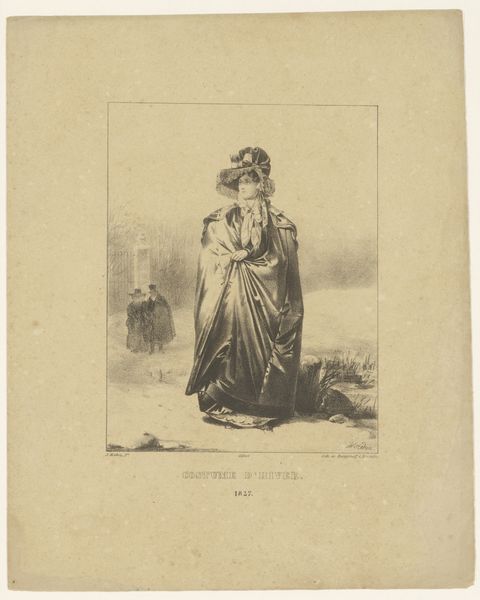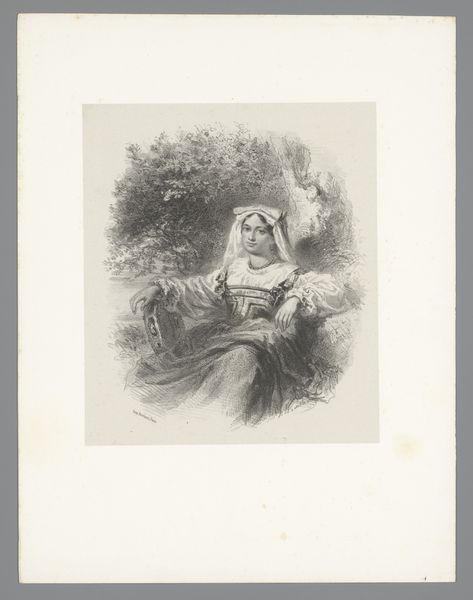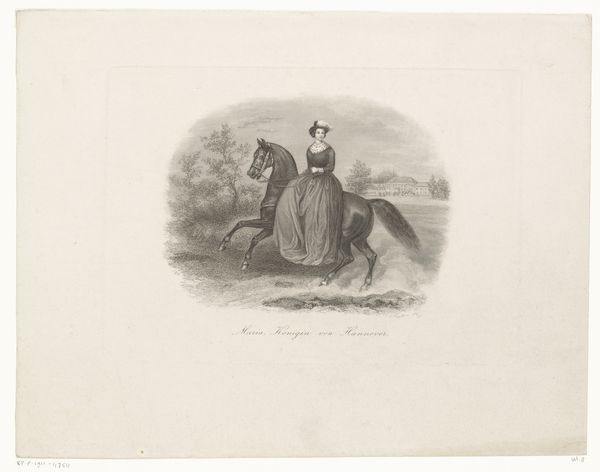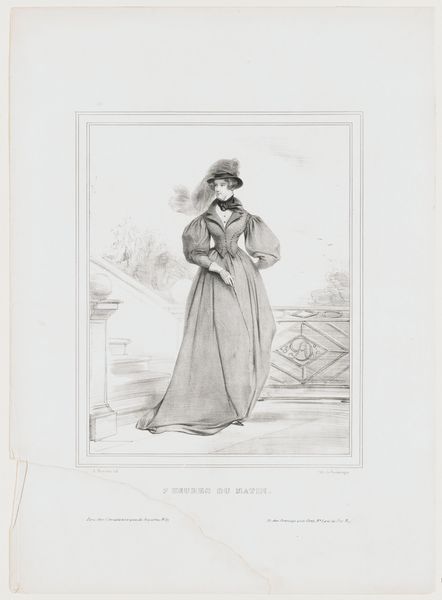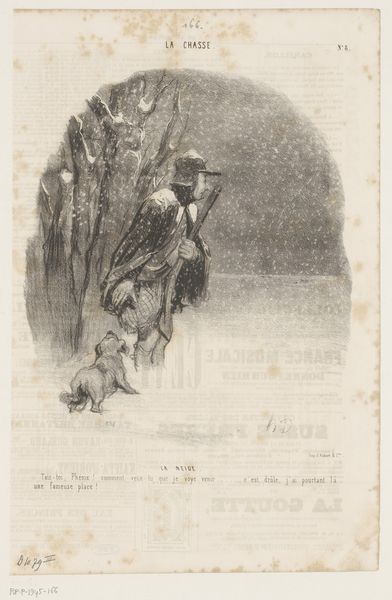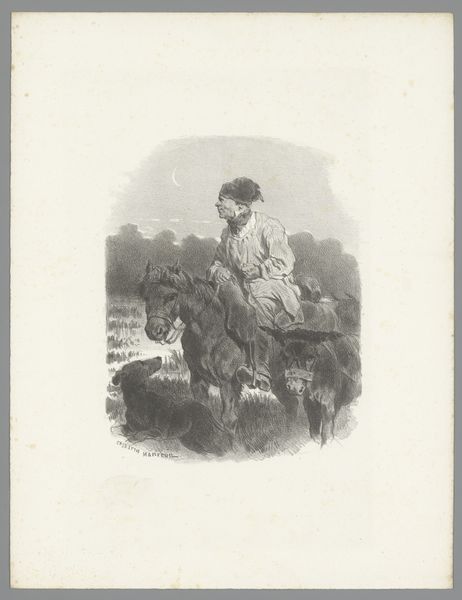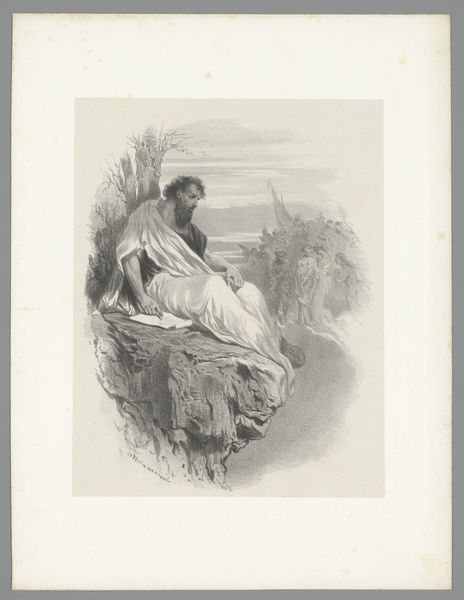
Dimensions: height 355 mm, width 273 mm
Copyright: Rijks Museum: Open Domain
Curator: This etching, dating from between 1830 and 1880, is titled "Herder met schapen en hond," or "Shepherd with sheep and dog" in English. The artist is Adolphe Mouilleron. What strikes you about it initially? Editor: There’s a melancholic feel to this. The subdued tones and the solitary figure suggest a sense of isolation, doesn’t it? A feeling that’s deeply interwoven with the land, perhaps? Curator: Absolutely. Mouilleron's use of etching in this work lends itself particularly well to the representation of rural life during that period. The mid-19th century witnessed significant social changes, with rural communities facing displacement due to industrialization. I believe the genre painting aspect here invites reflection on how this transition impacted labor, community, and identity. Editor: I agree. The figure’s weathered clothes speak volumes, placing him on the margins. His pose, leaning on the staff, hints at a weariness that’s more than just physical. I'm wondering if the image carries a commentary on the changing social position of rural workers? Curator: It very well could. Landscapes such as this one, featuring a lone shepherd, served as potent visual symbols in a period of increasing urbanization. Think of it as the idealised notion of country life contrasting with harsh urban realities. Mouilleron's work, through the lens of realism and romanticism, becomes an exploration of class, labor, and the environment. Editor: The dog too, seems significant. Animals in art often represent loyalty or servitude, and here, it amplifies the man's solitude and the ruggedness of their shared existence. I’m finding myself contemplating the narrative—the unseen flock, the distant hut, and their interwoven fates. Curator: Consider, also, the broader context of landscape art at the time. The romanticized view of nature often served political purposes. Visual representations helped cultivate national identity by highlighting local customs. Editor: It certainly opens up various narratives on power structures. Curator: Precisely. I find Mouilleron’s etching underscores themes of change. Editor: I find this etching’s stillness truly intriguing. There's much more to discover in it.
Comments
No comments
Be the first to comment and join the conversation on the ultimate creative platform.
